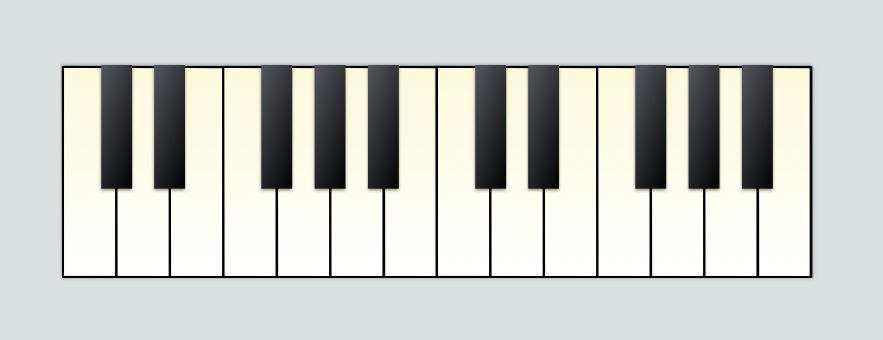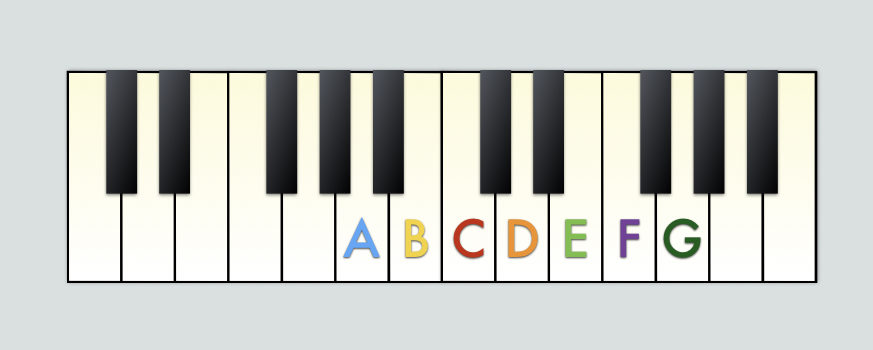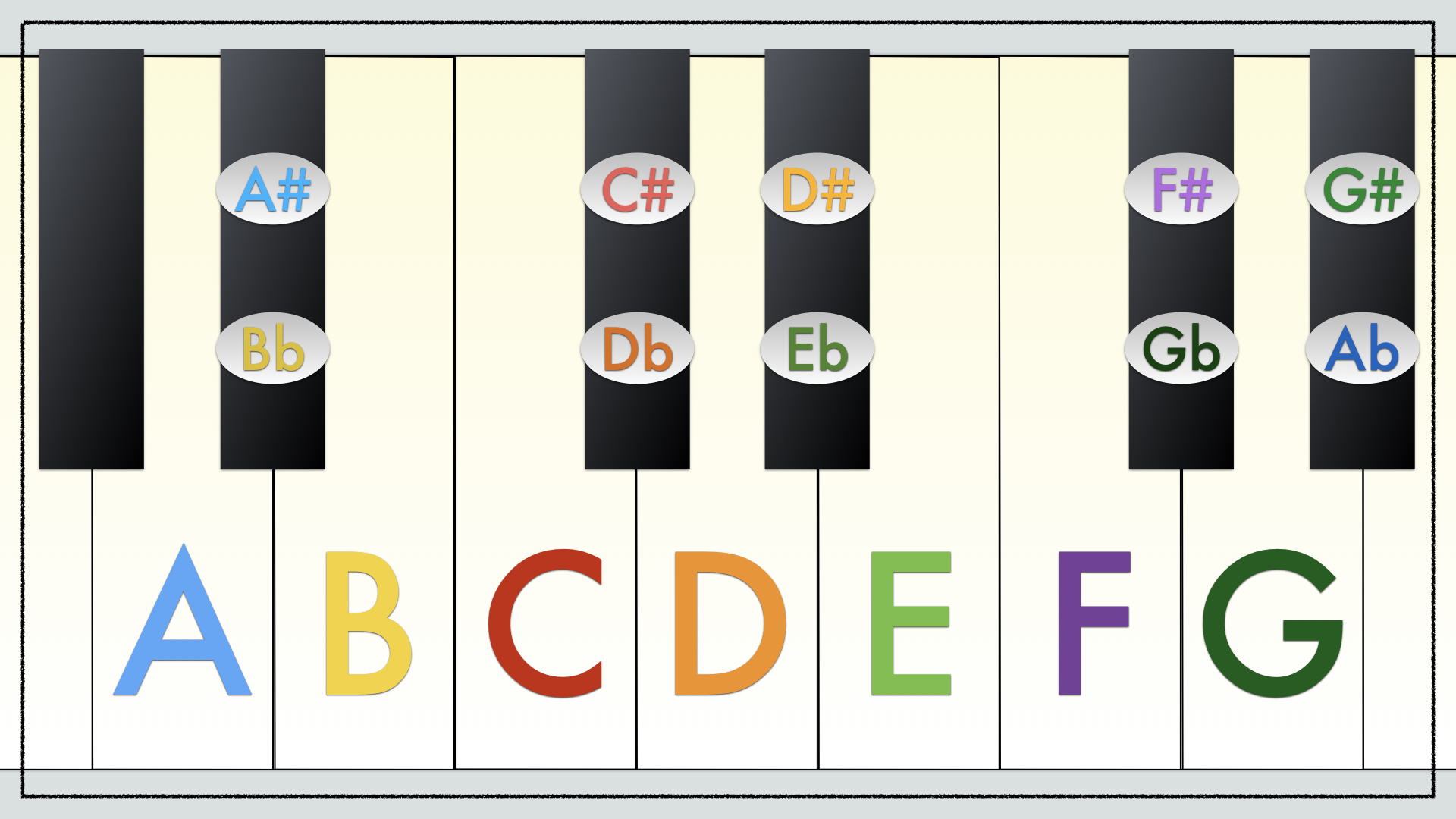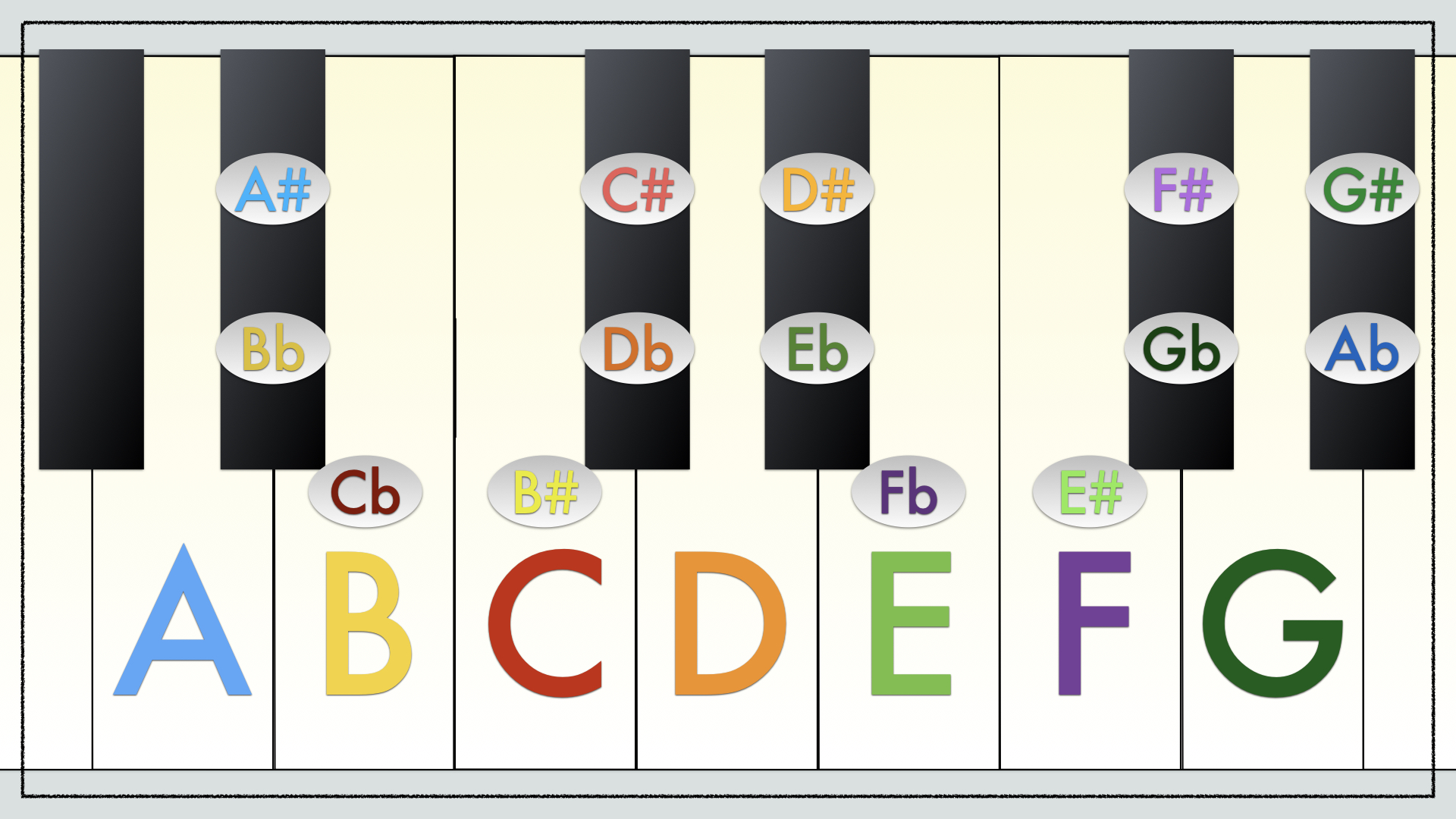The most common way to visualize our Western musical universe is through the piano keyboard.

There are two colors of keys in a specific pattern: 7 white keys with 5 offset black keys stuck in between some of the white keys. This pattern creates 12 possible keys. (Notice that the black keys alternate groups of 2 and 3, and that some white keys have no black keys in between.)
The 7 white keys go with our 7 note names: A through G. Compare where A is with the 3 black key group (between the middle and right black keys).

Now we need to apply our flat and sharp names to the keyboard. First we need to know that the distance between any key (white or black) and the next key to the right or left is a half step. Now some definitions.
half step – the relationship between two adjacent piano keys
whole step – the relationship between two piano keys where you skip one note in between
sharp – raises a regular note name pitch by a half step (C raised one half step is C sharp)
flat – lowers a regular note name pitch by a half step (D lowered one half step is D flat)
If we apply this stuff, we find that the 5 black keys have two names. C sharp is the black key to the right of C. D flat is the black key to the left of D.

This also means that our white keys we call B, C, E, and F also have a second name, because they are all a half step away from another white key, as you can see below.
You should be able to identify all 21 of these note names with the piano keyboard at sight without hesitation.